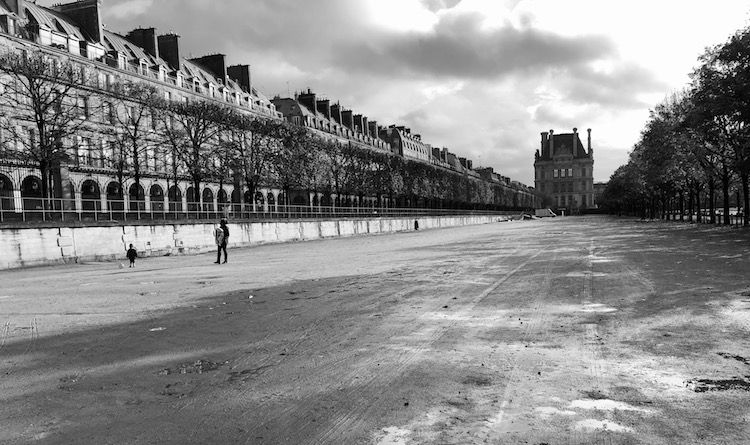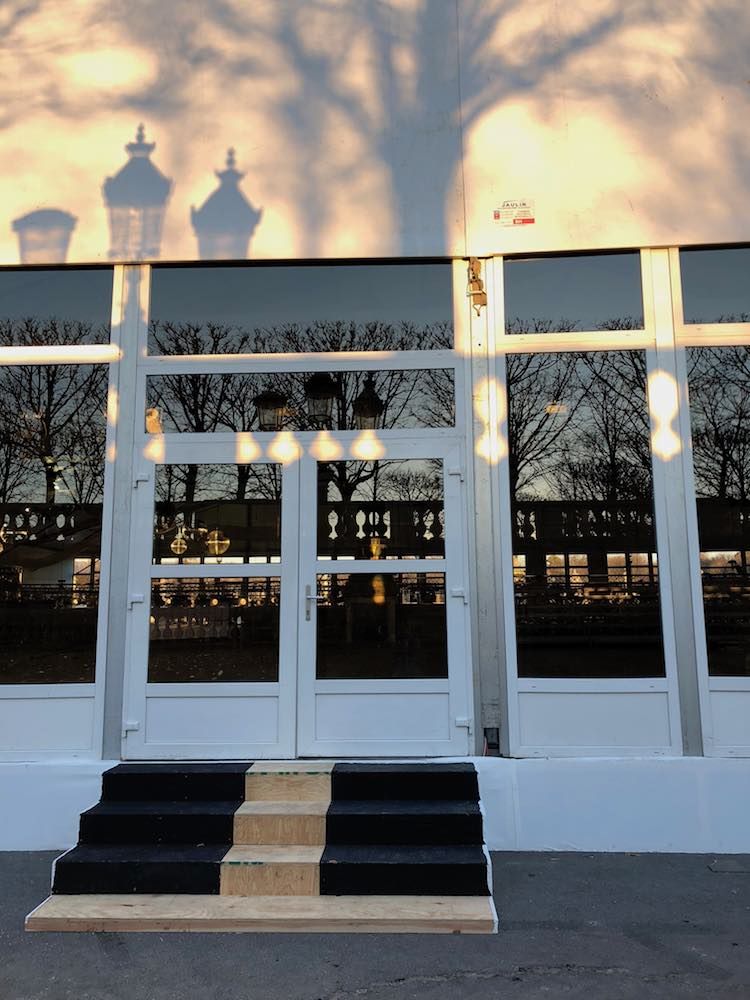Greek Lessons

Friday, 6 March
Sometimes I ask myself what it is about Paris that I love so much. Near the top of a long list is the fact that so many of her buildings and monuments were here hundreds of years before I was born and, barring human folly, natural disaster or some combination of the two, will still be standing long after I am gone. The fact that I am just an infinitesimal dot in the vast tableau of the city’s history humbles but also comforts me. I am part of a continuum.

As anyone who reads this blog knows, I walk my dog—have walked my dogs (Lily, Elsa, now Tasha)—every morning in the Jardins des Tuileries, the oldest and perhaps the grandest gardens in France. Previously the site of a tile manufacturer (tuiles are tiles), the space was transformed in the 16th century by Catherine de Médicis, wife of King Henri II, to adorn the Palais des Tuileries that she was constructing for herself and future French royals. Over time the palace was replaced by the Louvre and the gardens have been re-landscaped, most notably by André Le Nôtre for Louis XIV in the mid-17th century. Not much has changed since then, including the public's right to flâner and relax amidst its trees and around its fountains.

For at least as long as I have been walking dogs on the raised terraces (to the far right and left in the above picture), ie, since 1997, the gardens have hosted the Paris fashion shows. On the open space to the north side along the rue de Rivoli...

...tents go up...

...and up...

Another large marquee is erected under the chestnuts on the south side...

Sometimes the building spills onto the place de la Concorde...

The process lasts some weeks, the time to assemble the structures, host the fashion shows and disassemble. It ruins the views, makes a lot of noise and generally disrupts a quiet morning walk but, as Stéphane, Nathaële and I say while the engines rumble and the hammers clang on metal, it creates jobs and with France's unemployment rate still hovering around 9%, how can you complain?

It seems to me, however, that these fashion shows have occurred with ever greater frequency over the last few years. That the gardens are constantly being disfigured by these white behemoths going up and coming down, that money is making the world go round with ever greater force. There's both haute couture and prêt-à-porter and there are I don't how many seasons for each in the fashion world's year. I don't much like the whole business but it’s something I have mostly learned to live with by focusing on the jobs.
Until now.
Early February I noticed that one of the fountains, the one you can see in the above drawing of the gardens from the 17th century, was cordoned off and drained. I saw nothing odd in this; even fountains need baths and I’ve seen them getting a good scrub before. But no brushes appeared. Instead a platform was placed on top of it. And the monster just kept growing…

…and growing…

…until it became this:

The word ephemera, meaning what is transitory or trivial, comes from the Greek and originally denoted a plant or an insect with a lifespan of one day. That's about how long this tent got before dismantling began. As of this writing—a month or so after work started—all the building material is finally gone but the fountain remains covered in a black tarp and cordoned off so that the public must still make a large detour to get around its ugliness.
Something is wrong with this picture on every level. Smothering the dignified and aged stone. Creating an eyesore for everyone on the outside so that those within can bear witness, for an hour or two, to this autumn’s vision of silky elegance. What a staggering effort for so fleeting a result. Not to mention the price tag. Jobs, yes, but at what cost?
There's another Greek word, hubris, and excessive pride, it seems to me, is exactly what is wrong with this picture.
Even now, sitting in the peace of my office, I am incensed. What is the matter with us humans? What can stop our insatiable natures?
Well, the Greeks had an answer to that too. When human pride spins out of control, in steps Nemesis, the goddess of retribution. And by all appearances she is descending to earth at this very moment. The coronavirus, on everyone’s lips metaphorically if not yet physically, has kept many away from this fashion week. A couple of shows were cancelled. Traffic in and out of the tents was eerily sparse.
Elsewhere in our frantic world other public gatherings, from book fairs to sports events to James Bond premieres, are being cancelled or postponed. Cruise ships, those horizontal Xanadu skyscrapers that criss-cross our planet and pollute our oceans, are proving to be petri dishes for the disease. Hundreds of passengers have fallen ill, requiring thousands of others to remain trapped in their cubicles for weeks.
A 'lethal plague' is the backdrop to the most famous Greek tragedy Oedipus Rex and Sophocles wrote the play during the Athenian pestilence of the late 5th century BCE. Reading about Oedipus defying the gods by ignoring their prophecies, thus leading to his downfall, is how countless early teens, myself included, are taught the terms hubris and nemesis.
So what have we learned in the last 2500 years?
But let's not finish on the negative note of our incorrigible natures. The days are lengthening; the premature spring is in the air. And with luck the fountain will soon regain all her grace and glory.
